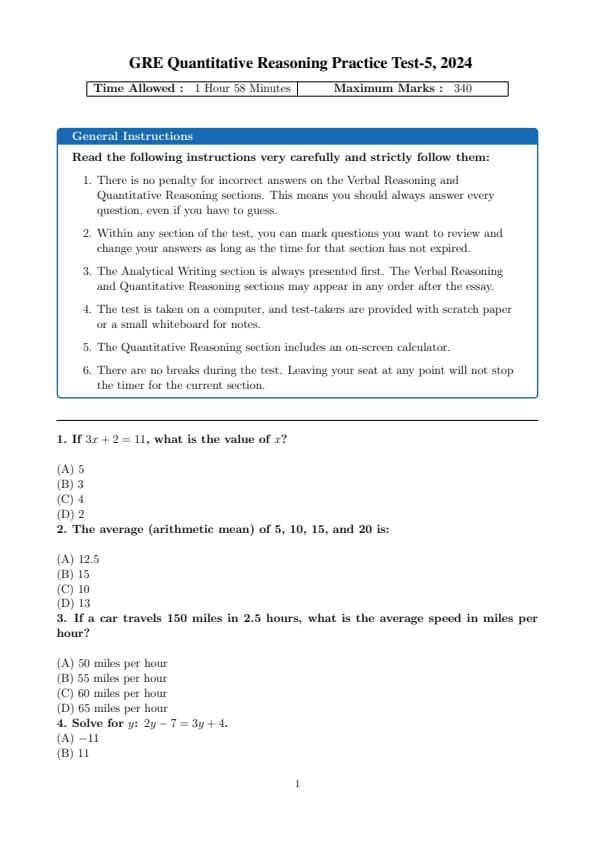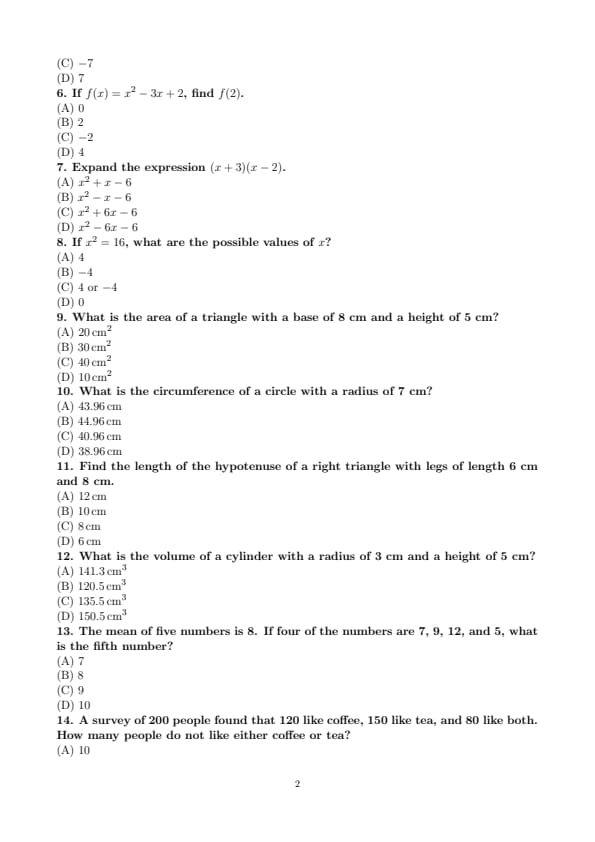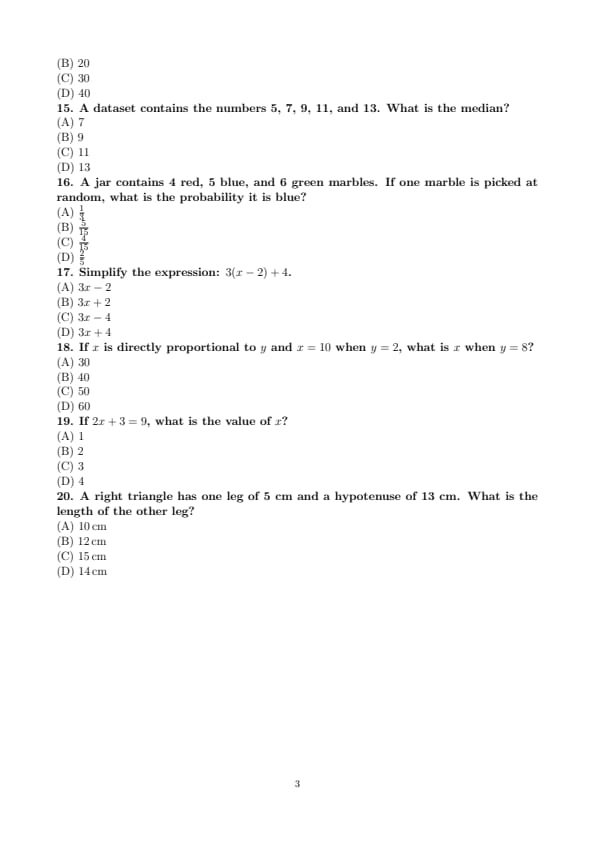GRE 2024 Quantitative Reasoning Practice Test 5 Question Paper with Solutions PDF is available for download. The overall test time is about 1 hour and 58 minutes. GRE has total 5 sections:
- Analytical Writing (One "Analyze an Issue" task, Alloted time 30 minutes)
- Verbal Reasoning (Two Sections, with 12 questions and 15 questions respectively)
- Quantitative Reasoning (Two Sections, with 12 questions and 15 questions respectively)
GRE 2024 Qantitative Reasoning Practice Test 5 Question Paper with Solutions PDF
| GRE 2024 Quantitative Reasoning Question Paper with Solutions PDF | Check Solutions |

If \( 3x + 2 = 11 \), what is the value of \( x \)?
The average (arithmetic mean) of 5, 10, 15, and 20 is:
If a car travels 150 miles in 2.5 hours, what is the average speed in miles per hour?
Solve for \( y \): \( 2y - 7 = 3y + 4 \).
If \( f(x) = x^2 - 3x + 2 \), find \( f(2) \).
Expand the expression \( (x + 3)(x - 2) \).
If \( x^2 = 16 \), what are the possible values of \( x \)?
What is the area of a triangle with a base of 8 cm and a height of 5 cm?
What is the circumference of a circle with a radius of 7 cm?
Find the length of the hypotenuse of a right triangle with legs of length 6 cm and 8 cm.
What is the volume of a cylinder with a radius of 3 cm and a height of 5 cm?
The mean of five numbers is 8. If four of the numbers are 7, 9, 12, and 5, what is the fifth number?
A survey of 200 people found that 120 like coffee, 150 like tea, and 80 like both. How many people do not like either coffee or tea?
A dataset contains the numbers 5, 7, 9, 11, and 13. What is the median?
A jar contains 4 red, 5 blue, and 6 green marbles. If one marble is picked at random, what is the probability it is blue?
Simplify the expression: \( 3(x - 2) + 4 \).
If \( x \) is directly proportional to \( y \) and \( x = 10 \) when \( y = 2 \), what is \( x \) when \( y = 8 \)?
If \( 2x + 3 = 9 \), what is the value of \( x \)?
A right triangle has one leg of 5 cm and a hypotenuse of 13 cm. What is the length of the other leg?







Comments